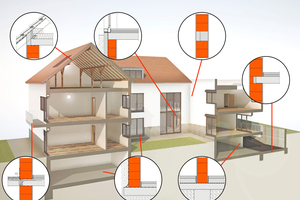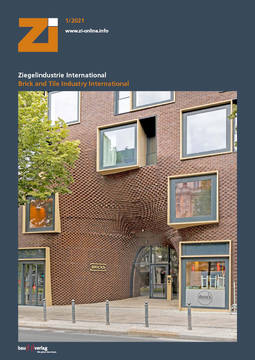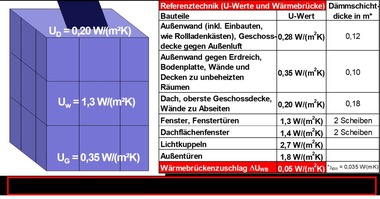Germany’s Buildings Energy Act: Optimally equipped for the GEG with bricks
In November 2020, Germany’s new Buildings Energy Act (GEG) came into force. This brings together Germany’s Energy Saving Ordinance (EnEV), Energy Conservation Act (EnEG) and Act on the Promotion of Renewable Energies in the Heat Sector (EEWärmeG) in one new act. The German brick and tile industry welcomes this harmonization of legislation and supports the measures of the German government to reduce CO2 emissions in the buildings sector.
“With our products, we are making an important contribution in both the construction of new buildings and the renovation of existing buildings to achieving climate-neutral buildings by 2050,” says Dr Matthias Frederichs, General Secretary of the Federal Association of the German Brick and Tile Industry, clearly expressing the industry’s standpoint.
High-end thermal
insulation in newbuilds
Thanks to their material properties, modern masonry bricks provide a high level of thermal insulation. Depending on the wall thickness and building design, all supported KfW efficiency standards to passive-house standard can be achieved with bricks. Supplementary system accessories minimize thermal bridges so that a material-optimized building envelope is formed from building base to attic. With their thermal storage capacity, which buffers heat in summer while keeping heat inside the building longer in winter, solid building structures boast an up to 12-percent-lower heating energy requirement than buildings based on lightweight construction, says Frederichs.
EU renovation initiative gives new impetus to renovation
Frederichs sees the biggest potential for energy saving in existing buildings, which make up 90 percent, that is the largest part of buildings in Germany: “The renovation initiative planned by the EU Commission, which envisages doubling of the renovation rate, complements the support for building renovation anchored in the German government’s climate package and will give the necessary impetus to the urgently needed renovation of existing building stock,” says Frederichs in his assessment.
Thermal bridge tool facilitates GEG-compliant design
With regard to thermal insulation, joints, feed-throughs, corners and edges are weak points at which heat losses increase. “With our free Ziegel Wärmebrückenkatalog 5.0 (Brick Thermal Bridge Catalogue 5.0), we provide architects, engineers and planners with user-friendly software that enables GEG-compliant verification of thermal bridges for all products in the brick and tile industry,” Frederichs emphasizes. Based on extensive amendments and supplements to DIN 4108-Bbl.2, the online tool makes the digital planning and documentation of detail design solutions easier. Details of joints and connections can be selected from the brick thermal bridges stored in the software or based on the standards or they can be input individually. Parallel to the online tool, a pdf catalogue with 260 details is also available.







